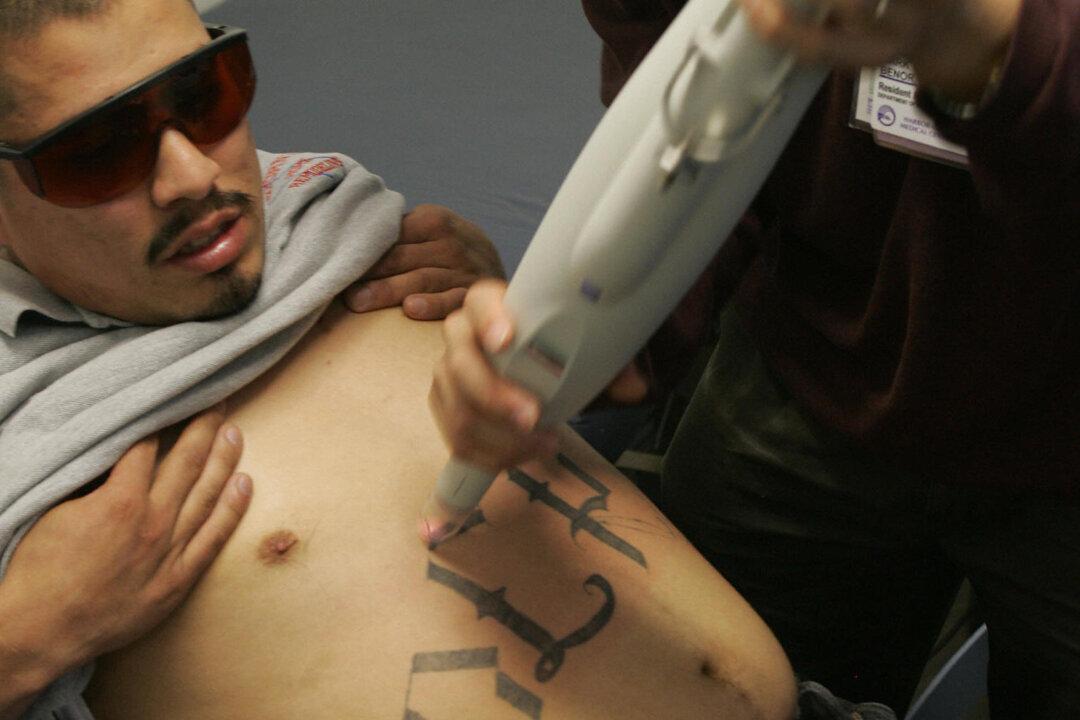Tattoo removal can often make all the difference for an ex-convict landing a new job, and California prisons are now teaming up with tattoo removal companies to offer the procedure while people are still incarcerated. Many prisoners say the procedure is liberating.
The California Prison Industry Authority, a state agency that facilitates job training and placement for inmates, has provided at least 216 women sporting 650 tattoos with laser removal treatment at the Folsom Women’s Facility, the San Francisco Chronicle reported.




